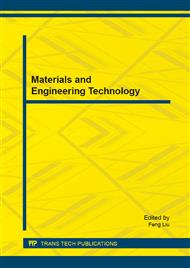p.702
p.707
p.712
p.717
p.721
p.727
p.732
p.737
p.744
An Efficient Method for Managing CoMP Cooperating Set Based on Central Controller in LTE-A Systems
Abstract:
“Authorized Shared Access” (ASA) is a spectrum management policy which enables the secondary system to opportunistically utilize the licensed spectrum of the primary systems. In the coexistence of LTE-A system with primary systems, one of the constituent cells of the CoMP cooperating set may be affected because it has to vacate the ASA frequency for it overlaps with the protected area of the primary system. As a result, the CoMP cooperating set will be changed, and the operation of the CoMP can’t be continued execution. In this case, the UE’s QoS can’t be guaranteed and even the UE experiences call drop when using the traditional method. In this paper, by utilizing a central controller, we propose an efficient method for managing CoMP cooperating set on the ASA spectrum. The change information about the affected cell is sent to the serving cell of the CoMP through the central controller in advance. Then, the serving cell may reselect a new CoMP cooperating set or determine CoMP information indicating whether the CoMP cooperating set will be continued based on this change information, which effectively ensures continued execution of CoMP and the UE’s QoS. Simulation results show that the proposed method can provide better performance compared with the traditional method.
Info:
Periodical:
Pages:
721-726
Citation:
Online since:
January 2015
Authors:
Keywords:
Price:
Сopyright:
© 2015 Trans Tech Publications Ltd. All Rights Reserved
Share:
Citation:


